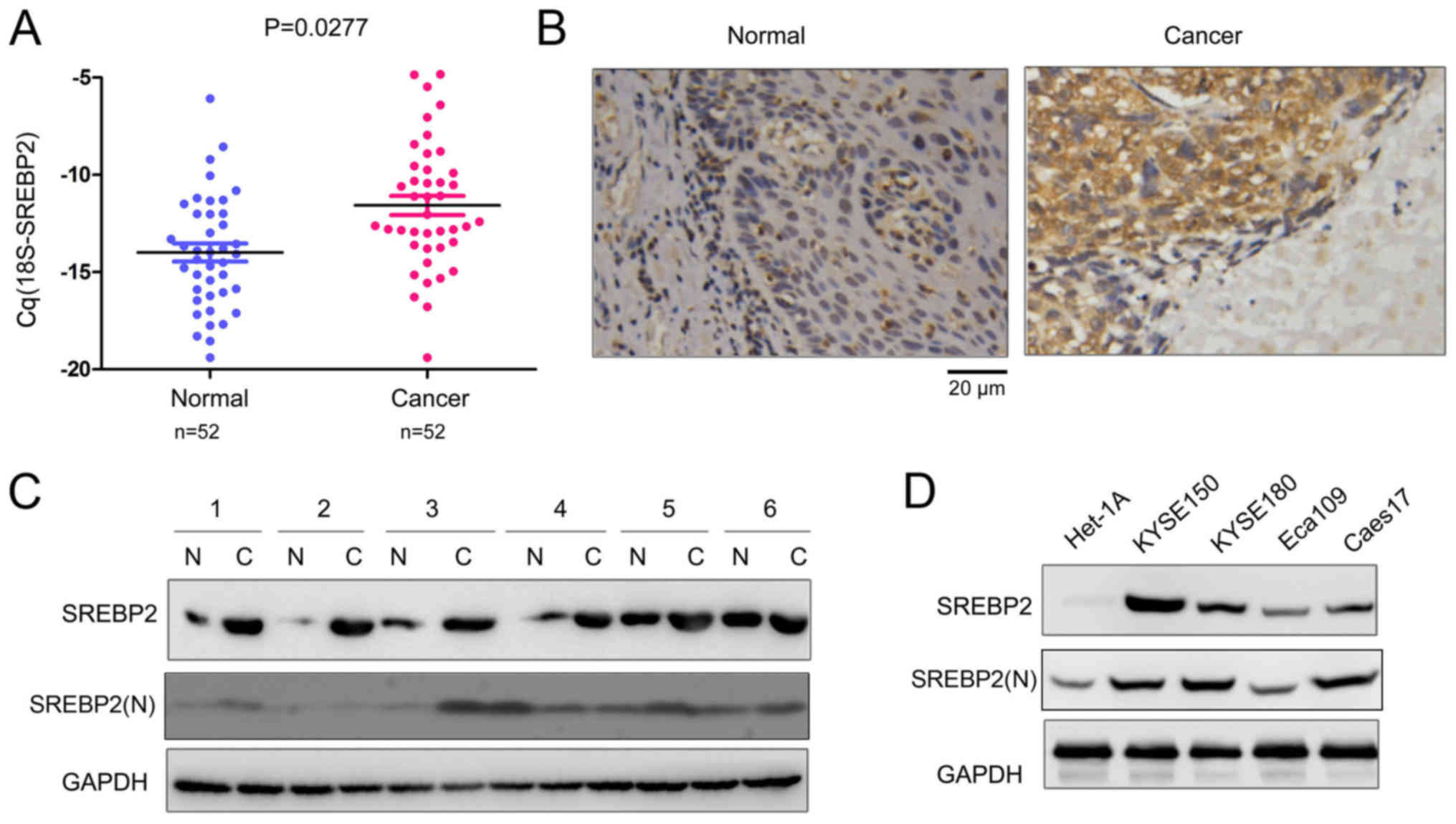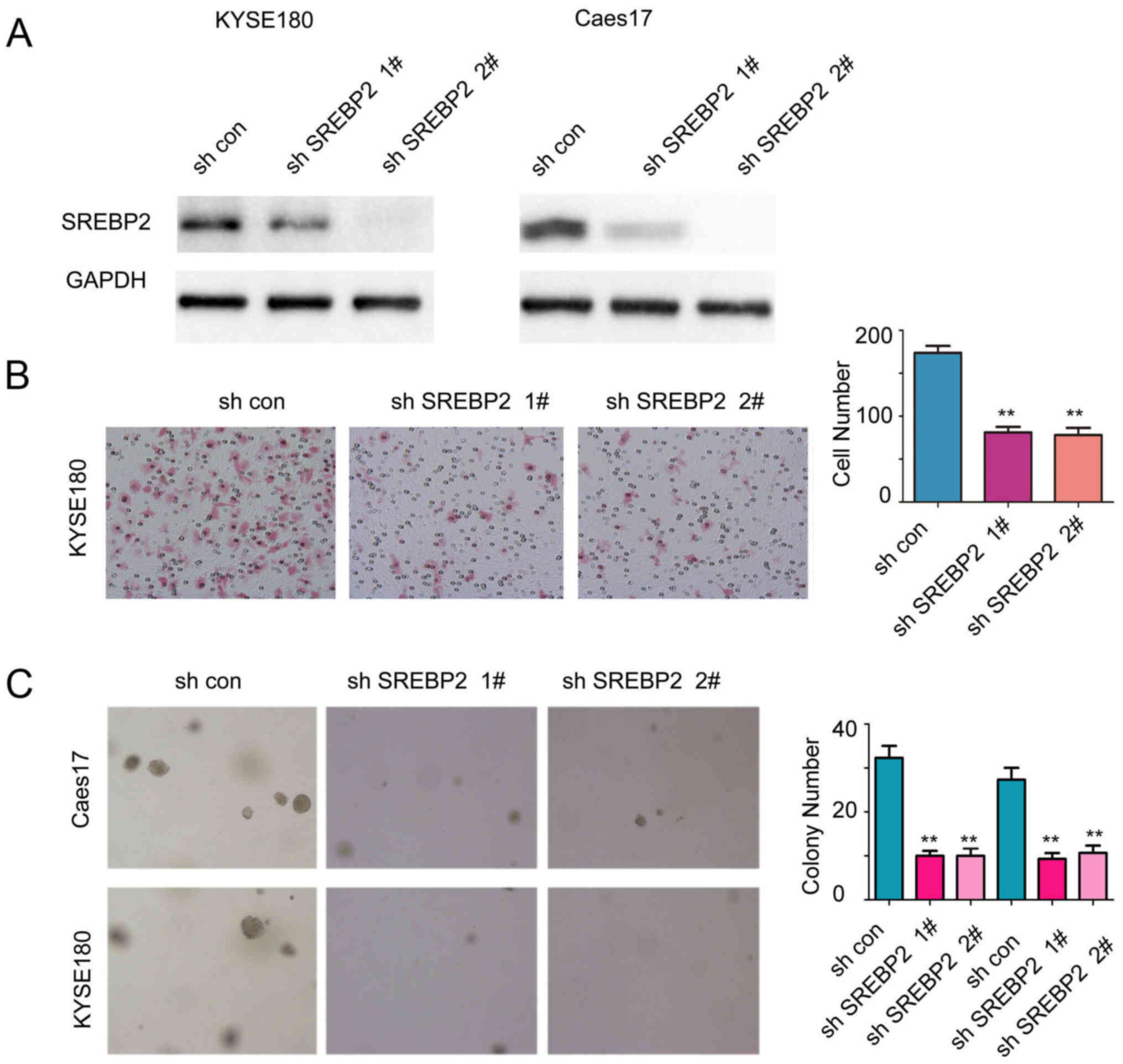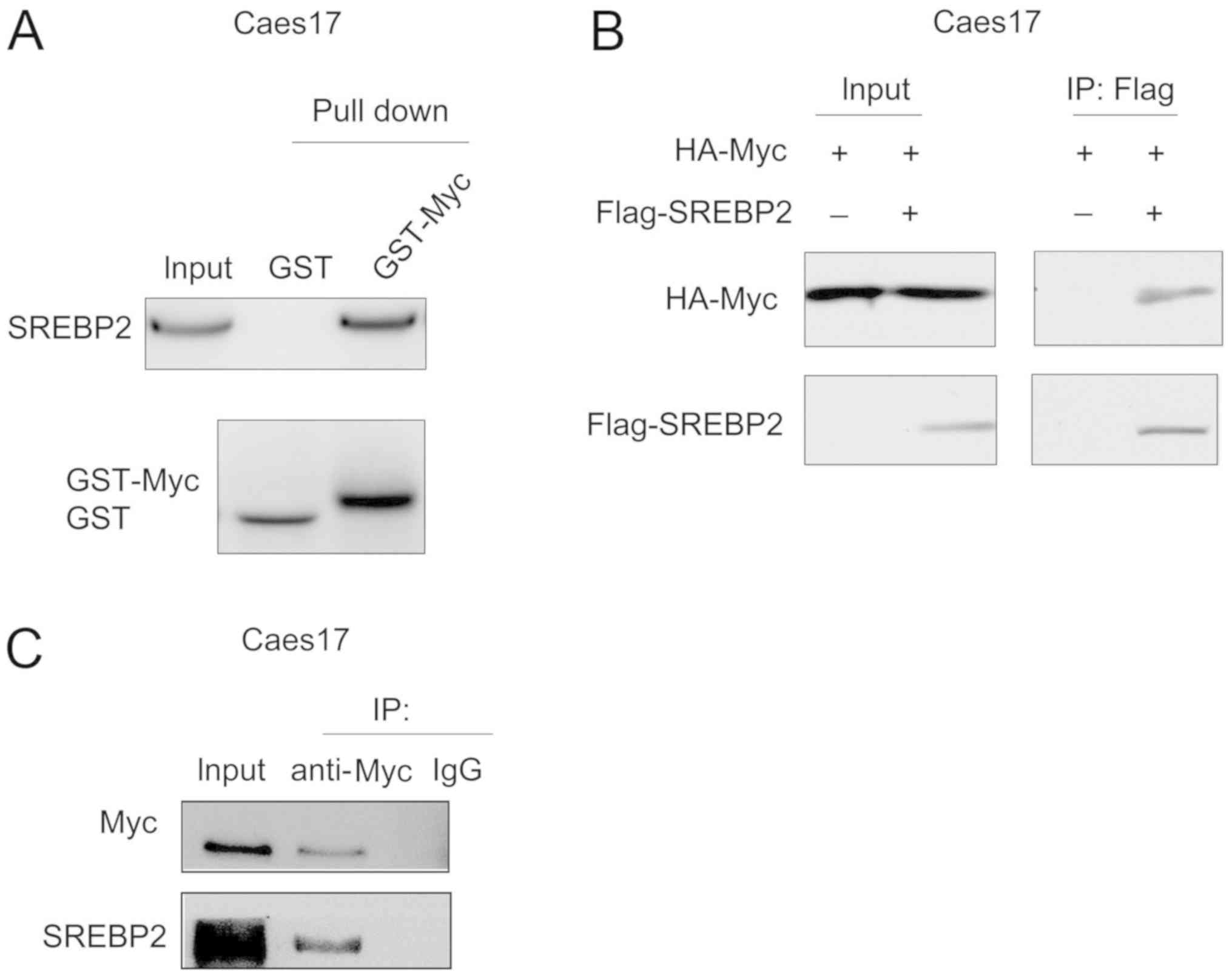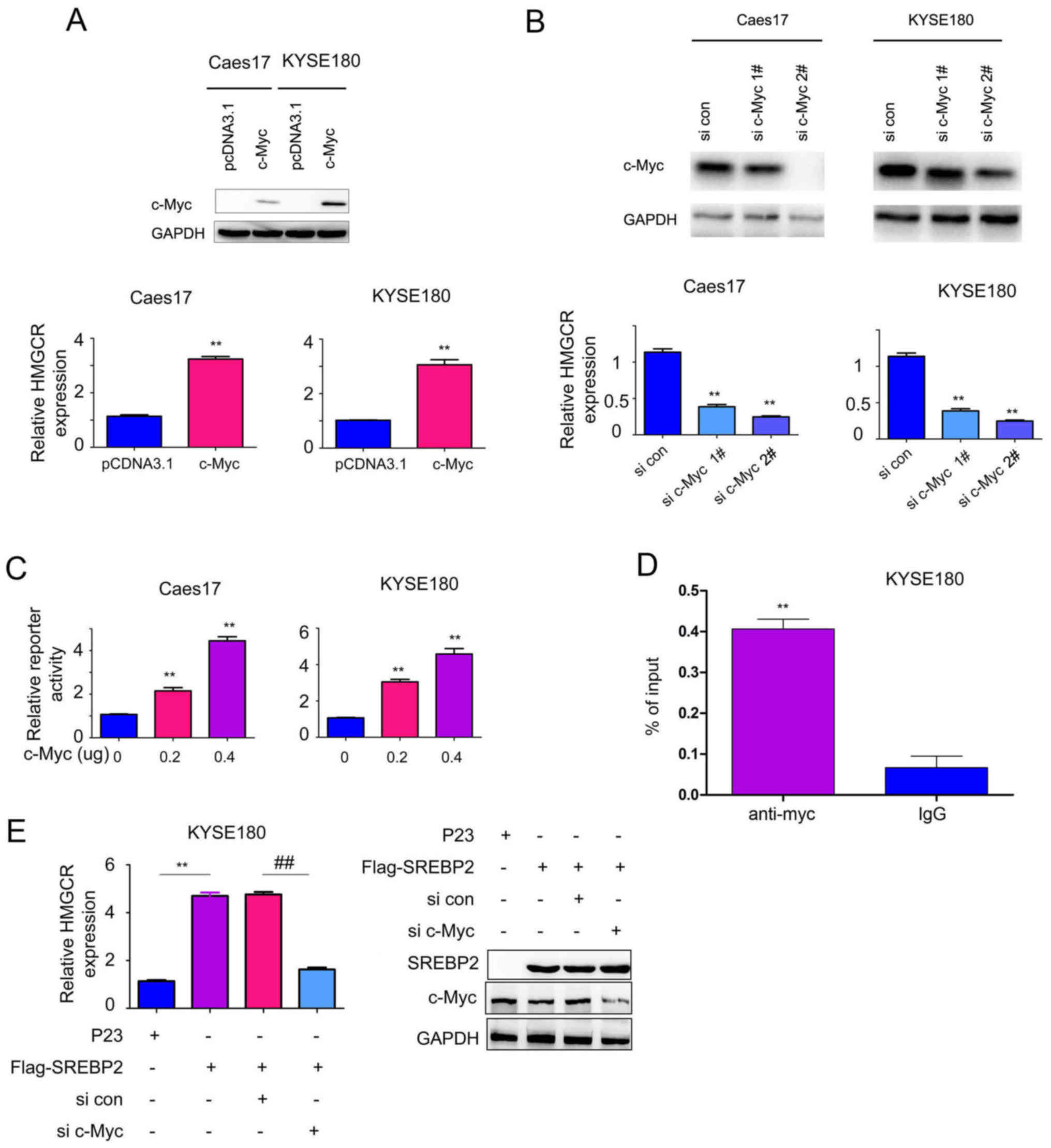|
1
|
Siegel RL, Miller KD and Jemal A: Cancer
statistics, 2017. CA Cancer J Clin. 67:7–30. 2017. View Article : Google Scholar : PubMed/NCBI
|
|
2
|
Schwartz L, Supuran CT and Alfarouk KO:
The warburg effect and the hallmarks of cancer. Anticancer Agents
Med Chem. 17:164–170. 2017. View Article : Google Scholar : PubMed/NCBI
|
|
3
|
Munkley J and Elliott DJ: Hallmarks of
glycosylation in cancer. Oncotarget. 7:35478–35489. 2016.
View Article : Google Scholar : PubMed/NCBI
|
|
4
|
Goldstein JL and Brown MS: Regulation of
the mevalonate pathway. Nature. 343:425–430. 1990. View Article : Google Scholar : PubMed/NCBI
|
|
5
|
Landau BR and Brunengraber H: Shunt
pathway of mevalonate metabolism. Methods Enzymol. 110:100–114.
1985. View Article : Google Scholar : PubMed/NCBI
|
|
6
|
Weinberger C: A model for farnesoid
feedback control in the mevalonate pathway. Trends Endocrinol
Metab. 7:1–6. 1996. View Article : Google Scholar : PubMed/NCBI
|
|
7
|
Bathaie SZ, Ashrafi M, Azizian M and
Tamanoi F: Mevalonate pathway and human cancers. Curr Mol
Pharmacol. 10:77–85. 2017. View Article : Google Scholar : PubMed/NCBI
|
|
8
|
Swanson KM and Hohl RJ: Anti-cancer
therapy: Targeting the mevalonate pathway. Curr Cancer Drug
Targets. 6:15–37. 2006. View Article : Google Scholar : PubMed/NCBI
|
|
9
|
Wang T, Seah S, Loh X, Chan CW, Hartman M,
Goh BC and Lee SC: Simvastatin-induced breast cancer cell death and
deactivation of PI3K/Akt and MAPK/ERK signalling are reversed by
metabolic products of the mevalonate pathway. Oncotarget.
7:2532–2544. 2016.PubMed/NCBI
|
|
10
|
Madison BB: Srebp2: A master regulator of
sterol and fatty acid synthesis. J Lipid Res. 57:333–335. 2016.
View Article : Google Scholar : PubMed/NCBI
|
|
11
|
Ma K, Malhotra P, Soni V, Hedroug O,
Annaba F, Dudeja A, Shen L, Turner JR, Khramtsova EA, Saksena S, et
al: Overactivation of intestinal SREBP2 in mice increases serum
cholesterol. PLoS One. 9:e842212014. View Article : Google Scholar : PubMed/NCBI
|
|
12
|
Shi J, Zhu J, Zhao H, Zhong C, Xu Z and
Yao F: Mevalonate pathway is a therapeutic target in esophageal
squamous cell carcinoma. Tumour Biol. 34:429–435. 2013. View Article : Google Scholar : PubMed/NCBI
|
|
13
|
Zhong C, Fan L, Yao F, Shi J, Fang W and
Zhao H: HMGCR is necessary for the tumorigenecity of esophageal
squamous cell carcinoma and is regulated by Myc. Tumour Biol.
35:4123–4129. 2014. View Article : Google Scholar : PubMed/NCBI
|
|
14
|
Xie JJ, Xu LY, Wu JY, Shen ZY, Zhao Q, Du
ZP, Lv Z, Gu W, Pan F, Xu XE, et al: Involvement of CYR61 and CTGF
in the fascin-mediated proliferation and invasiveness of esophageal
squamous cell carcinomas cells. Am J Pathol. 176:939–951. 2010.
View Article : Google Scholar : PubMed/NCBI
|
|
15
|
Livak KJ and Schmittgen TD: Analysis of
relative gene expression data using real-time quantitative PCR and
the 2(-Delta Delta C(T)) method. Methods. 25:402–408. 2001.
View Article : Google Scholar : PubMed/NCBI
|
|
16
|
Mukherjee M, Basu Ball W and Das PK:
Leishmania donovani activates SREBP2 to modulate macrophage
membrane cholesterol and mitochondrial oxidants for establishment
of infection. Int J Biochem Cell Biol. 55:196–208. 2014. View Article : Google Scholar : PubMed/NCBI
|
|
17
|
Kajinami K, Takekoshi N, Brousseau ME and
Schaefer EJ: Pharmacogenetics of HMG-CoA reductase inhibitors:
exploring the potential for genotype-based individualization of
coronary heart disease management. Atherosclerosis. 177:219–234.
2004. View Article : Google Scholar : PubMed/NCBI
|
|
18
|
Caruso MG and Notarnicola M: Biochemical
changes of mevalonate pathway in human colorectal cancer.
Anticancer Res. 25:3393–3397. 2005.PubMed/NCBI
|
|
19
|
Andela VB, Pirri M, Schwarz EM, Puzas EJ,
O'Keefe RJ, Rosenblatt JD and Rosier RN: The mevalonate synthesis
pathway as a therapeutic target in cancer. Clin Orthop Relat Res
(415 Suppl). S59–S66. 2003. View Article : Google Scholar
|
|
20
|
Freed-Pastor WA, Mizuno H, Zhao X,
Langerød A, Moon SH, Rodriguez-Barrueco R, Barsotti A, Chicas A, Li
W, Polotskaia A, et al: Mutant p53 disrupts mammary tissue
architecture via the mevalonate pathway. Cell. 148:244–258. 2012.
View Article : Google Scholar : PubMed/NCBI
|
|
21
|
Gomes TS, Noguti J, Forones NM, Lima FO,
Dobo C, Fernandes Junior JA, Oshima CT and Ribeiro DA: Correlation
analysis of c-myc, p21(WAF/CIP1), p53, C-erbB-2 and COX-2 proteins
in esophageal squamous cell carcinoma. Pathol Res Pract. 209:6–9.
2013. View Article : Google Scholar : PubMed/NCBI
|
|
22
|
Brown J, Bothma H, Veale R and Willem P:
Genomic imbalances in esophageal carcinoma cell lines involve Wnt
pathway genes. World J Gastroenterol. 17:2909–2923. 2011.
View Article : Google Scholar : PubMed/NCBI
|
|
23
|
Wang W, Xue L and Wang P: Prognostic value
of β-catenin, c-myc, and cyclin D1 expressions in patients with
esophageal squamous cell carcinoma. Med Oncol. 28:163–169. 2011.
View Article : Google Scholar : PubMed/NCBI
|
|
24
|
Ishizuka T, Tanabe C, Sakamoto H, Aoyagi
K, Maekawa M, Matsukura N, Tokunaga A, Tajiri T, Yoshida T, Terada
M and Sasaki H: Gene amplification profiling of esophageal squamous
cell carcinomas by DNA array CGH. Biochem Biophys Res Commun.
296:152–155. 2002. View Article : Google Scholar : PubMed/NCBI
|
|
25
|
Mandard AM, Hainaut P and Hollstein M:
Genetic steps in the development of squamous cell carcinoma of the
esophagus. Mutat Res. 462:335–342. 2000. View Article : Google Scholar : PubMed/NCBI
|
|
26
|
Shukla SK, Gunda V, Abrego J, Haridas D,
Mishra A, Souchek J, Chaika NV, Yu F, Sasson AR, Lazenby AJ, et al:
MUC16-mediated activation of mTOR and c-Myc reprograms pancreatic
cancer metabolism. Oncotarget. 6:19118–19131. 2015. View Article : Google Scholar : PubMed/NCBI
|
|
27
|
Miller DM, Thomas SD, Islam A, Muench D
and Sedoris K: c-Myc and cancer metabolism. Clin Cancer Res.
18:5546–5553. 2012. View Article : Google Scholar : PubMed/NCBI
|
|
28
|
Gordan JD, Thompson CB and Simon MC: HIF
and c-Myc: Sibling rivals for control of cancer cell metabolism and
proliferation. Cancer cell. 12:108–113. 2007. View Article : Google Scholar : PubMed/NCBI
|














